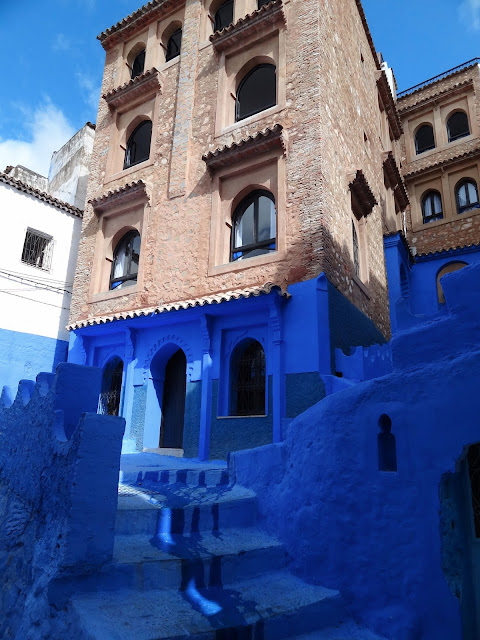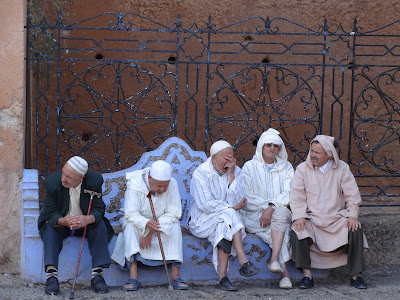Heritage Green? Eggplant? Mock Redwood?
My fellow owners and I were in gridlock over what colour the new fence would be.
Had we been in the northwest Moroccan town of Chefchaouen, the choice would have been much easier.
Blue? Or white?
 |
| Chefchaouen of Morocco |
 |
| Chefchaouen proves you can never be too blue |
I doubt the local hardware store even bothers to stock any other colour. After all, there doesn't seem to be too much demand for Avocado or Caribbean Green around these parts.
 |
| The network of narrow white and blue streets easily transform into a maze |
The rhythm of daily life seems to be set by the local children; they scurry to school in the morning, rush home for lunch, and then turn the streets into sports fields and playgrounds when school ends.
Unlike me, they have no trouble navigating their way through the narrow, maze-like streets around the central kasbah.
 |
| Just remember: you're staying in the white house with the blue door |
But there's seems to be such a feeling of community here in the medina that you could also imagine that same family taking in that lost child for a few nights until they eventually found their way back home.
 |
| View of Chefchaouen |
Waking up in Chefchaouen, you could be forgiven for thinking you've arrived on a Greek island.
But this isn't a town which is pretending to be something it is not; the Mediterranean influence here extends well beyond the colour scheme.
 |
| Blue doesn't have to mean boring |
But step into one of the many shops and restaurants in the medina, and it's 100% Morocco all the way.
Like everywhere else in the country, tagines, kebabs and couscous rule the menu. But the locals are most proud of their goats cheese... oh and cannabis.
Yes, it seems the region is one of the main cannabis-producing regions of Morocco.
This probably explains the presence of the bohemian backpacker crowd lounging happily around the al fresco cafes.
It also probably explains the incoherent conversation I had with a New Zealander by the hotel swimming pool who seemed unsure of not only where she was, but also how she came to be here and for how long she would stay. She may still be there, though she probably wouldn't know it.
 |
| The many hues of blue in Chefchaouen |
 |
| Local gents gather for a morning chat outside Chefchaouen's kasbah |
Back home, we've gone with Heritage Green on our fence, but there is dissent brewing. Eggplant threatens to make a comeback at any stage.

No comments:
Post a Comment